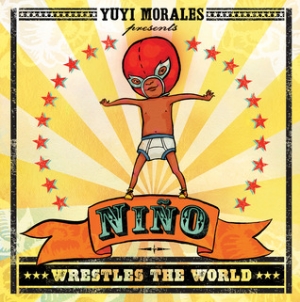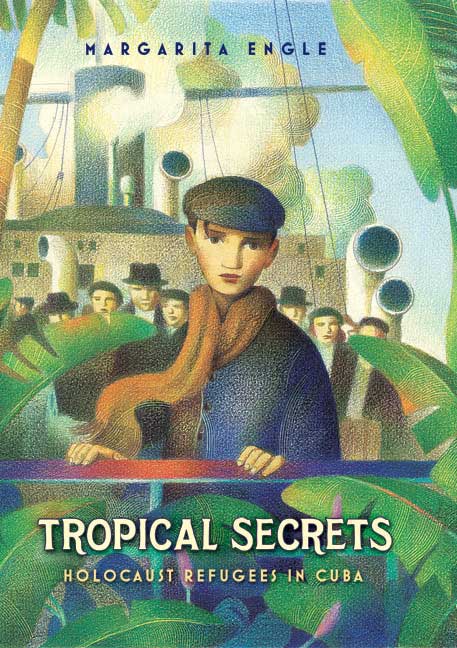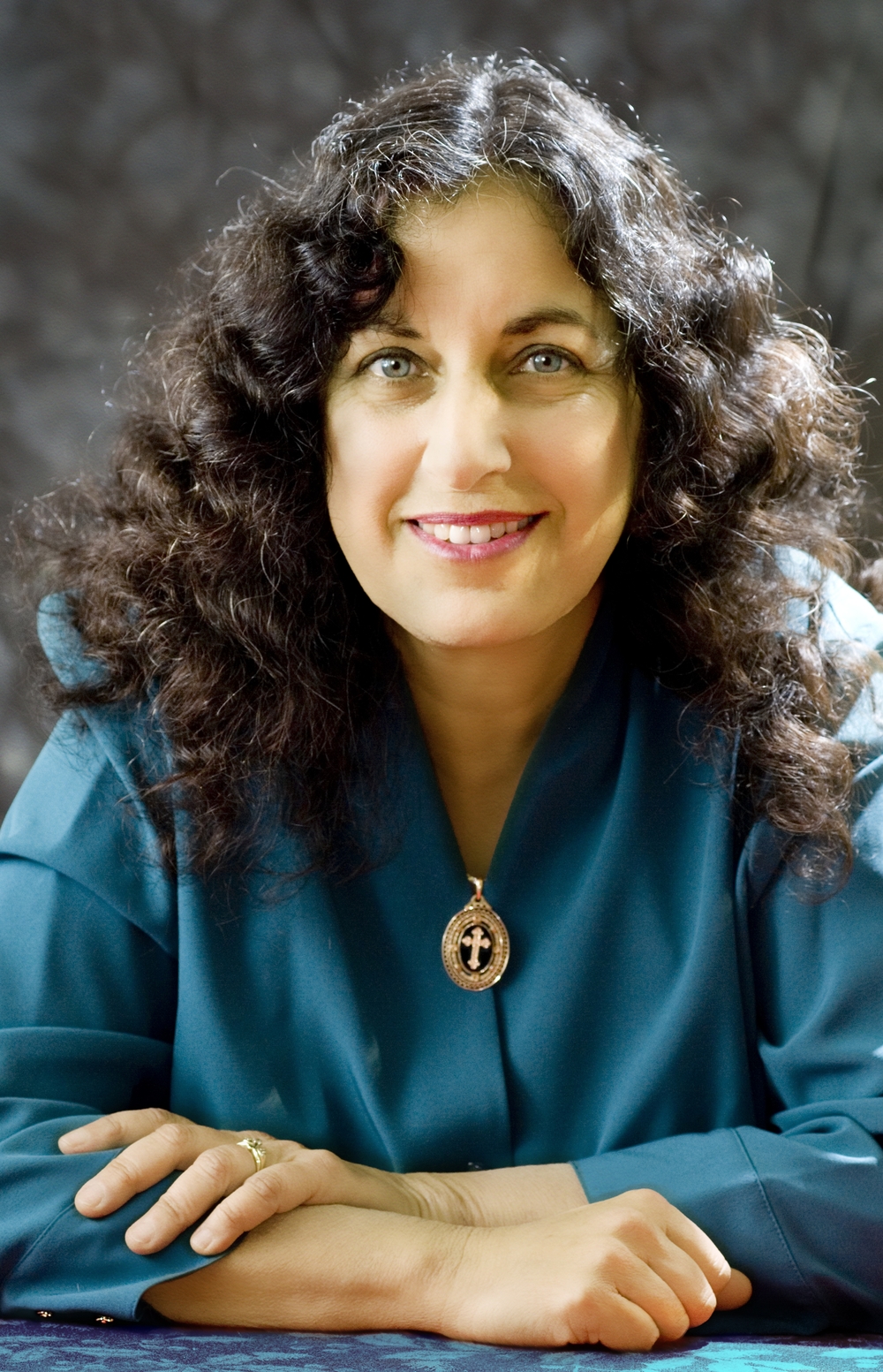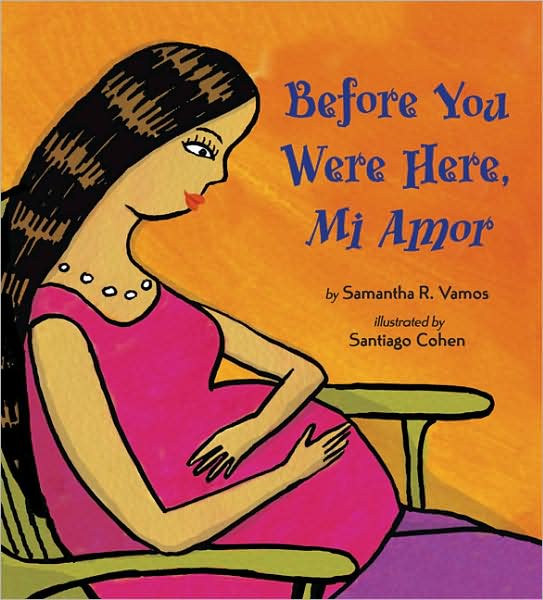 We're celebrating El día de los niños/El día de los libros (Children's Day/ Book Day) a little in advance, with an interview with children's book author Samantha Vamos. Samantha gives us "the story behind the story" of her bilingual picture book Before You Were Here, Mi Amor (illustrated by Santiago Cohen; Viking, 2009), her forthcoming work, and the mood-altering effects of arroz con leche.
We're celebrating El día de los niños/El día de los libros (Children's Day/ Book Day) a little in advance, with an interview with children's book author Samantha Vamos. Samantha gives us "the story behind the story" of her bilingual picture book Before You Were Here, Mi Amor (illustrated by Santiago Cohen; Viking, 2009), her forthcoming work, and the mood-altering effects of arroz con leche.
Before You Were Here, Mi Amor had a long gestation period--eleven years! Where does its story begin?
The inspiration for Before You Were Here, Mi Amor came from the first pregnancy of my younger sister. My extended family and I began envisioning doing things to welcome our future grandson/nephew into the world. Those thoughts generated memories of my mother telling me about my anticipation over the birth of my younger sister. I often asked when my sister would be here and when she would be old enough to play with me. With those memories, I began writing and my book is an outgrowth of that experience. Of course, my nephew took a mere nine months to birth and as you’ve noted, my book took eleven years!
How did it evolve into a culturally-specific story about welcoming a new baby into an extended family?
As usual with my writing, there is a story behind the story. I had written a manuscript. Although the manuscript sold to a major publishing house, that house was subsequently acquired and my manuscript sat with no plan for publication. Later, I received a release, permitting me to shop the manuscript again. Years later, recognizing changing U.S. demographics and the fact that the family is a very significant element of Latin American culture, I realized that my manuscript might especially appeal if rewritten to incorporate Spanish. I drew upon Latin/Hispanic cultural elements to write the book as well as the community and characteristics of my immediate and extended family.
I have to ask: does eating arroz con leche really give you (or your baby) "a sweet and gentle nature"? (I hope so!)
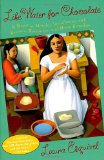 Many books have made an impression on me and Laura Esquivel’s Like Water for Chocolate is a favorite. Esquivel’s protagonist Tita De La Garza not only expresses her emotions through food, but also nurtures with food. My family similarly shows their love through food preparation. When my sister was pregnant, my father often prepared delicious, healthy things for her to eat. As I recalled his special meals, I wondered what the pregnant mother in my book could eat that would result in blessings for her baby.
Many books have made an impression on me and Laura Esquivel’s Like Water for Chocolate is a favorite. Esquivel’s protagonist Tita De La Garza not only expresses her emotions through food, but also nurtures with food. My family similarly shows their love through food preparation. When my sister was pregnant, my father often prepared delicious, healthy things for her to eat. As I recalled his special meals, I wondered what the pregnant mother in my book could eat that would result in blessings for her baby.
Rice pudding is sweet and mild and I thought how delightful it would be if eating it would impart beneficial qualities to the baby. Unfortunately, I can neither confirm nor deny that eating arroz con leche gives a baby a sweet and gentle nature. I would guess, however, that an excellent bowl could improve the disposition of pregnant mothers. [I would agree! -- AA]
The text of Before You Were Here, Mi Amor is in English, interwoven with Spanish words. Why did you choose to write it this way?
As I incorporated Spanish words, the text flowed differently – the words sounded more intimate, more beautiful and tender. The text resonated more with me because the bilingual manner of speaking reminded me of the way I had heard language spoken as a child.
How do Santiago Cohen's illustrations complement the text?
 Santiago Cohen’s jewel-toned illustrations are both vibrant and charming. The entire book is a rich, robust explosion of color – from the Dedication page to the Glossary. Yet beyond color, I feel that Santiago’s illustrations complement the text because his paintings convey the warmth and community of family life. One of my favorite illustrations is his picture of the hermana (“sister”) showing the drawing she’s made of the members of her family. Framed on a wall above my son’s art table are the illustration of the family dancing salsa together (they’re joyful and I cannot help but smile) and the illustration of abuela (“grandmother”) painting an animal mural on the baby’s bedroom wall. The two-page spread of the mother rocking, wondering what her child would be like suddenly slows the text’s pace. Santiago painted blues and purples that soothe and calm. He’s a very talented artist and a kind, lovely person.
Santiago Cohen’s jewel-toned illustrations are both vibrant and charming. The entire book is a rich, robust explosion of color – from the Dedication page to the Glossary. Yet beyond color, I feel that Santiago’s illustrations complement the text because his paintings convey the warmth and community of family life. One of my favorite illustrations is his picture of the hermana (“sister”) showing the drawing she’s made of the members of her family. Framed on a wall above my son’s art table are the illustration of the family dancing salsa together (they’re joyful and I cannot help but smile) and the illustration of abuela (“grandmother”) painting an animal mural on the baby’s bedroom wall. The two-page spread of the mother rocking, wondering what her child would be like suddenly slows the text’s pace. Santiago painted blues and purples that soothe and calm. He’s a very talented artist and a kind, lovely person.
Your next book, The Cazuela That The Farm Maiden Stirred (Charlesbridge, 2011) also introduces Spanish vocabulary in an organic way. Would you tell us a little bit about that book?
The idea for The Cazuela That the Farm Maiden Stirred popped into my head one morning while making pancakes. Lacking two ingredients, I thought how much more fun it would be if I lived on a farm and the cow was kind enough to provide a cup of milk and the hen offered an egg. A few minutes later, I put down my utensils and began writing. I never finished the pancakes, but I did manage to write a first draft of my story!
The Cazuela That The Farm Maiden Stirred is a children’s picture book based on the familiar nursery rhyme, "The House That Jack Built." Like the nursery rhyme, The Cazuela That The Farm Maiden Stirred is a cumulative tale in which the action builds as certain words repeat. Specifically, in this case, Spanish words, which are woven throughout the English text, repeat as the story builds. Five different farm animals (goat, cow, duck, donkey, and chicken) and their farmer each contribute ingredients to a pot (the cazuela) stirred by the farm maiden. A surprise recipe is created and at the book’s end, an actual recipe is provided. There is also a glossary with a pronunciation guide.
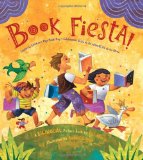 I’m thrilled to say that The Cazuela That The Farm Maiden Stirred is illustrated by Rafael López, the recipient of the 2010 Pura Belpré Illustrator Award for Book Fiesta! (Pat Mora; Rayo, 2009). I’ve recently seen his illustrations for The Cazuela That The Farm Maiden Stirred and they are beautifully detailed and absolutely magical. He has truly given the story life and the characters are both amusing and delightful. I’m very grateful that we’ve been paired on this book.
I’m thrilled to say that The Cazuela That The Farm Maiden Stirred is illustrated by Rafael López, the recipient of the 2010 Pura Belpré Illustrator Award for Book Fiesta! (Pat Mora; Rayo, 2009). I’ve recently seen his illustrations for The Cazuela That The Farm Maiden Stirred and they are beautifully detailed and absolutely magical. He has truly given the story life and the characters are both amusing and delightful. I’m very grateful that we’ve been paired on this book.
I can't wait to see Cazuela! What can you tell us about your current projects?
I recently wrote a children’s picture book about trucks, and after ten years, my novel about a widow is receiving finishing touches. I have an idea for a non-fiction picture book that I’d like to try writing and I hope to soon return to a middle-grade novel that I began years ago.
I wish you the best of luck on your current (and future) projects, Samantha. Thank you for sharing your stories with me at bookstogether.
[Me again.] In Before You Were Here, Mi Amor, the siblings fill a bookcase with some of their favorite libros for the new baby. You can find about more about Samantha Vamos, including some of her favorite books, and her work at her website, www.samanthavamos.com.

